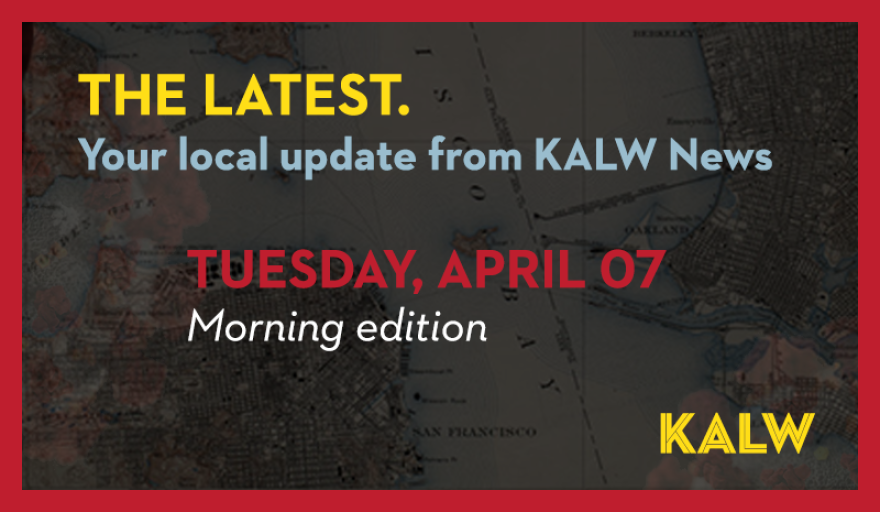Bay Area curve flattening / Hospital beds increasing / Stay-at-home timeline / Muni service reduction
Bay Area curve flattening
When six Bay Area Counties established the nation’s first shelter-in-place mandate, exactly three weeks ago, today, the talk was about flattening the curve. That is, the steep rise on a graph that depicts the exponential rate at which COVID-19 infections spread. Well, it seems to be working. The number of confirmed cases in the Bay Area has only climbed 60 percent in the last week — much slower than the national average.
Hospital beds increasing
The Bay Area’s aggressive action at handling the crisis has reduced the potential caseload at hospitals, and it’s also resulted in more available hospital beds. At a press conference, yesterday, San Francisco’s Director of Public Health, Dr. Grant Colfax, said, “By working together since January, San Francisco hospitals have managed to increase the city's Intensive Care Unit beds from 277 to 530. A 91% increase. We accomplished this by opening previously closed units and by repurposing areas normally used for other functions, such as outpatient surgery, these extra beds will make a big difference.”
The state of California is looking to add 50,000 beds by the end of the month to accommodate an expected surge in COVID-19 cases. At the same press conference, Mayor London Breed said San Francisco has been working closely with the governor’s office on repurposing a hospital that had previously been closed. “Today,” she said, “Governor Gavin Newsom announced that the state will be leading an effort to open up 290 beds at the CPMC Pacific campus on California Street. The site will need some minor improvements before it's operational, but we anticipate opening it within the next 10 days.”
Stay-at-home timeline
While the numbers of new cases, and deaths, related to COVID-19 have plateaued over the last few days, the numbers of people requiring hospitalization, or being sent to Intensive Care Units are steadily rising. Those are the numbers that have led Governor Newsom to say the situation won’t reach its peak until May.
Muni service reduction
That’s another month, or so, at least, during which we won’t be getting around too much. And the San Francisco Municipal Transportation Agency, or Muni, is going to contribute — by drastically reducing service, this week.
Muni has experienced a significant decrease in ridership and anticipates a 40% reduction in its workforce. Social distancing requirements have made riding public transportation potentially hazardous. So even though Muni reports that nearly 100,000 passengers still need its services, it’s cutting back. Starting today, service will be discontinued on seven routes. Tomorrow, service will be reduced even further — to the 17-most used lines. Those include the N Judah, the T, and the 8 Bayshore. Those lines provide service to several medical facilities including UCSF Parnassus and Mission Bay Campuses.
SFMTA Director of Transportation Jeffrey Tumlin said the cuts will be painful in every single neighborhood, “And if the response that we've gotten from the public is any indication of success, we've made everyone equally unhappy.” But, he says, to keep San Franciscans safe, the cuts are necessary. “As the director of the SFMTA, I never thought I would say this. But please, if you have any other option for getting around, please do not ride Muni for the duration of the public health emergency. Muni is only for delivering essential workers to work and for allowing San Franciscans to access essential services. If you need to get around for some other purpose, please find another way.”
Muni officials say customers should prepare for delays and not rely on the NextBus app for accurate predictions.




